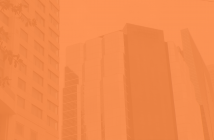 Jones Lang Lasalle put out a great article on productivity for the knowledge worker. Before we dive into the article, let’s define what is a “knowledge worker” because that is a new term and the answer is an interesting one.
Jones Lang Lasalle put out a great article on productivity for the knowledge worker. Before we dive into the article, let’s define what is a “knowledge worker” because that is a new term and the answer is an interesting one.
According to Wikipedia: Knowledge workers are workers whose main capital is knowledge. Typical examples may include software engineers, architects, engineers, scientists and lawyers, because they “think for a living”. What differentiates knowledge work from other forms of work is its primary task of “non-routine” problem solving that requires a combination of convergent, divergent, and creative thinking.
Here is where it got really interesting: Even though they sometimes are called “gold collars”, because of their high salaries, as well as because of their relative independence in controlling the process of their own work, current research shows that they are also more prone to burnout, and very close normative control from organizations they work for, unlike regular workers.
Now that we understand what a knowledge worker is, how are companies helping increase their productivity? JLL believes that there are five key strategies that create work environments that support collaboration, flexibility and choice. Here are those five workplace strategies:
- Work is what employees do, not where they sit. The focus of work and workplace is no longer about square-footage per person, but about revenue per person. Personally, I don’t think companies have bought into that idea 100%, because I constantly hear companies discuss their shrinking ratio of square footage per employee. I think this is an emerging trend and hopefully we’ll see it grow.
- Think membership, not ownership. The traditional one-person-per-desk model does not best serve knowledge workers. The most productive workplaces create non-territorial neighborhoods by function. These workplaces provide a wide range of environments—formal meeting zones, casual brainstorming spots, IT stations, private spaces—for different kinds of work. A topic I keep harping on – open, collaborative space is here to stay.
- Do more with less. The “ownership model” of assigning a seat to every employee is no longer sustainable, given that 50 percent of desks will be vacant on an average day in a typical company. In North America and Europe, for example, job sharing, telecommuting and virtual meetings have significantly decreased office space usage. Vacancy translates into underutilized real estate and a less-productive environment. When I was with CBRE, over 60% of the cubicles were empty on any given day. On Friday afternoon, it was a ghost town, yet, rent was due on the entire space.
- Provide choices to enhance productivity. Companies must find the right balance between supporting individual and team productivity. When employees have greater control over how and where they work, they are empowered to choose the space that is most productive for the task at hand. With spaces that support quiet or confidential work, as well as virtual or face-to-face collaboration, the workplace can drive cross-pollination of ideas, employee engagement and foster a sense of community. It may sound counter-intuitive, but employees who are given greater autonomy are often more engaged and loyal to an organization, even without personal desks.
- Flexible workspaces translate into agility. In a fast-moving, ever-changing economy, the organizations that can adapt to the market and economic forces succeed—and those that are built on a flexible workspace model have the advantage because their culture is wired for fluidity. People and technology are in the right place at the right time, which drives innovation.
Does your office facilitate productivity for your knowledge workers? I can help you find the right space to create that environment, just give me a call. For the entire article, click here


1 Comment
Agreed, the workspace is definitely evolving. In addition to more flexible workplace environments, there is the up-and-rising trend of the creative office space. It’s amazing to see how experimental certain offices are with their designs and layouts.